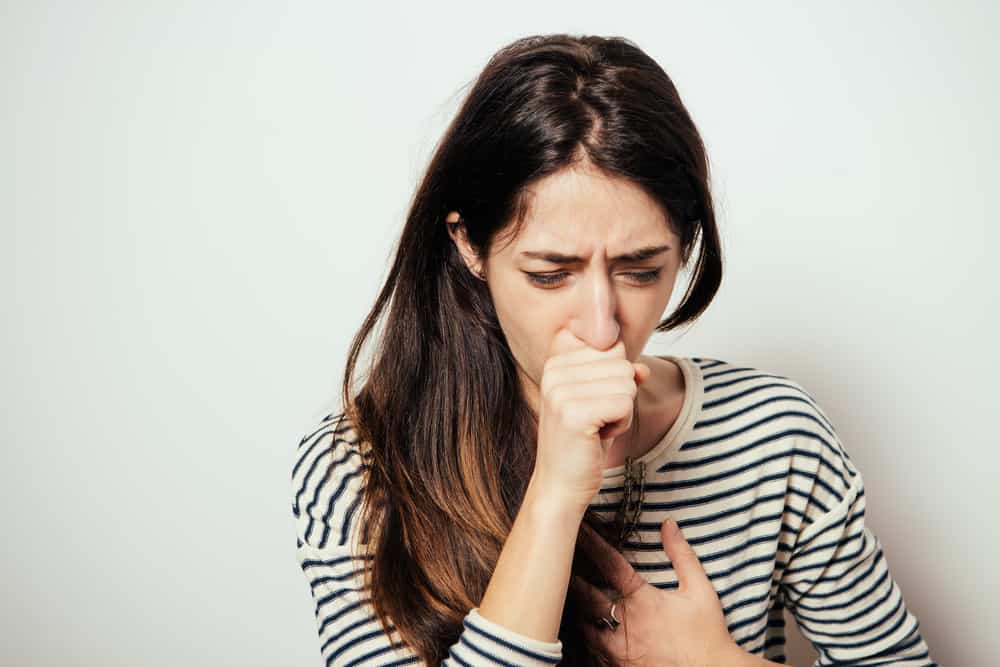Contents:
- Medical Video: Common Cough or COPD
- Get to know the symptoms of COPD
- Chronic cough: first symptom
- Other common COPD symptoms
- Symptoms of Advanced COPD
- 1. Headache
- 2. Swelling of the palms and ankles
- 3. Cardiovascular disease
- 4. Weight loss
Medical Video: Common Cough or COPD
Detecting COPD from the start can be the key to controlling this disease. For that, knowing the symptoms is an important thing to know. In addition to coughing, what are the symptoms of COPD that might appear?
Get to know the symptoms of COPD
Chronic obstructive pulmonary disease, aka COPD, is a lung disease caused by two diseases, namely emphysema and chronic bronchitis. This disease is a disease that cannot be cured but can be controlled so that the condition does not worsen. When you have a problem with the lungs, one of the symptoms that often appears is COPD.
Just like other diseases, coughing is also one of the symptoms of COPD. Long-term coughing is often a typical sign of COPD. Even so, this condition is not the only symptom of COPD that you might feel. There are several other symptoms that can arise along with conditions that develop lung damage.
The symptoms of COPD usually do not always come together. Symptoms can appear slowly with further symptoms that will arise when lung damage has occurred significantly. Symptoms of this disease can also be episodic and vary in intensity, meaning that it does not always appear in people with COPD.
If you have a risk factor, aka the cause that you have the potential to suffer from COPD, plus a cough that doesn't heal, it could be a symptom of COPD. If found at an early stage, COPD can be controlled so as not to cause even more damage to the lungs. That is why studying the symptoms and signs will be very useful for you.
Chronic cough: first symptom
Coughing is a symptom of COPD which usually appears first before other symptoms. According to Mayo Clinic, stubborn cough for three months (or more) in a year for at least two years, indicating someone has COPD. Your cough can appear every day, even though there are no symptoms of other diseases that accompany it, such as colds or flu.
Coughing is the way the body removes mucus from the airways and lungs and cleanses it from other irritants, such as dust. Actually, the body produces daily mucus in its fair amount. Mucus that comes out when coughing in a normal person is usually clear or colorless.
However, in people with COPD, the mucus they release when coughing is often yellow as a sign of infection. The condition of this cough will usually get worse in the morning, as well as during exercise or smoking.
Other common COPD symptoms
COPD is a chronic disease. Over time, COPD conditions may also develop if not seriously undergoing treatment. When this disease develops, maybe the symptoms of COPD that you feel are no longer just coughing.
You can get some of the common symptoms of COPD. These symptoms can be experienced starting from COPD from the initial stage to the intermediate stage.
Wheezing
COPD causes inflammation of your lungs and narrows the airways in it. When air is forced through a narrow or blocked airway in the lungs, you may be able to hear whistles when exhaling. This is called wheezing.
In patients with COPD, wheezing is most often caused by excess mucus that clogs the airways. This condition is also related to the hardening of the muscles that narrow the airways. Wheezing can also be a symptom of asthma and pneumonia.
Shortness of breath (dyspnea)
As you swell, narrow, and damage the airways in your lungs due to inflammation, you will become increasingly difficult to breathe or regulate your breath. These symptoms will be very easily recognized when there is an increase in physical activity. These symptoms can make it difficult for you to carry out daily routines, such aswalk, do simple homework, change clothes, or even take a shower. In fact, the worst, you can shortness of breath while resting. You obviously need medical help to overcome this.
Fatigue
If you experience difficulty breathing, you will not be able to get enough oxygen for your blood and muscles. Without the oxygen needed, bodily functions will slow down and fatigue will occur. You can also get tired because your lungs work harder to supply oxygen and remove carbon dioxide. As a result, you will run out of energy.
Frequent respiratory infections
Lungs of COPD sufferers have a disorder. That's why they usually have greater difficulty in cleaning the lungs from bacteria, viruses, pollutants, dust, and other irritants. This results in them being at risk for sting infections, such as colds, flu, and pneumonia. Although it is difficult to avoid this infection entirely, maintaining cleanliness and getting vaccinated on a regular basis, such as influenza vaccine and pneumonia vaccine, can reduce your risk.
Symptoms of Advanced COPD
Many symptoms of COPD are experienced at an early stage. However, along with the development of this disease, there may be other symptoms that will emerge. Symptoms can occur suddenly and without warning.
These advanced symptoms also have the potential to bring you to the condition of COPD exacerbations. According to the site Mayo Clinic,exacerbations are defined asepisodes of worsening of symptoms that last for several days. Here are some of the advanced symptoms of COPD that you need to watch out for.
1. Headache
When you have COPD, your lungs have difficulty releasing carbon dioxide and breathing oxygen. Headaches due to COPD occur due to high levels of carbon dioxide in the body and lack of oxygen. This condition usually gets worse in the morning.
2. Swelling of the palms and ankles
As the lungs become more damaged during the development of this disease, you can experience swelling in the palms and ankles. This happens because your heart has to work harder to pump blood to the damaged lungs. As a result, this can cause congestive heart failure.
3. Cardiovascular disease
Although the connection is not fully understood, COPD can increase the risk of heart-related problems. High blood pressure (hypertension) is one of these symptoms. Advanced stages can also increase your risk for heart attacks and strokes.
4. Weight loss
If you have been suffering from COPD for a long time, you can notice that you have experienced weight loss. The extra energy used by the heart or lungs to keep trying to perform their normal functions, can burn more calories than the body gets, which causes you to lose weight.
Chronic obstructive pulmonary disease, aka COPD, causes irreversible lung damage. Once, your lungs are damaged by COPD, so it will be forever. Even if it cannot be cured, the symptoms of COPD and further damage can be controlled with the right treatment.
Symptoms that do not improve, as well as the emergence of further signs of the disease, are indications that treatment does not work. Contact your doctor immediately if you do not feel progress with drugs or oxygen therapy that you might get. Treating symptoms of COPD that appear early is the best way to relieve symptoms and prolong survival if you suffer from this disease.
Hello Health Group does not provide medical advice, diagnosis or treatment.














